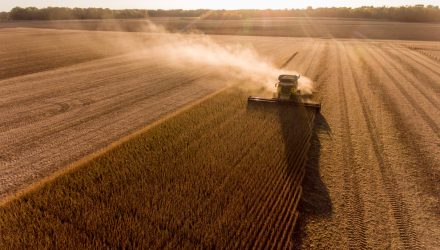Grains-related exchange traded funds jumped Wednesday after the U.S. Department of Agriculture came out with lower-than-anticipated plantings estimates and inventory.
Among the best performing non-leveraged ETFs of Wednesday, the Teucrium Corn Fund (CORN) increased 6.7%, the Teucrium Wheat Fund (NYSEArca: WEAT) rose 5.1%, and the Teucrium Soybean Fund (NYSEArca: SOYB) gained 5.2%.
Corn futures climbed by their daily exchange-imposed limit after the USDA said plantings of the crop came in at 92.692 million acres, as compared to analysts’ expectations for 93.787 million, Reuters reports. Additionally, the agency revealed that soybean plantings were at 87.555 million acres, compared to expectations of 88.955 million.
“We needed higher acres to give us a buffer and it went the wrong way,” Don Roose, president of Iowa-based brokerage U.S. Commodities, told Reuters.
Traders were largely surprised by the USDA’s revelation.
“Plain and simple, there are not enough soybean acres. Full stop,” said Peter J. Meyer, S&P Global Platts, head of grain and oilseed analytics, according to Successful Farming.
All 26 analysts polled by Reuters believed corn and soy area would hit a new record, with the lowest combined estimate at 181 million acres, Reuters reports. None of the analysts anticipated the possibility for corn or soy area to fall short or be unchanged from March.
“The numbers surprised in beans the most, with planted acreage lower than all surveyed trade estimates, but corn prices surged due to the expected dramatic change in the corn balance sheet and less than optimal July forecasts for the maturing corn crop. Soybeans have more time and a better chance to improve the crop than corn, which is why corn is the focus today,” Sal Gilbert, Teucrium Trading, said.
The lower planting season added to global supply fears after inventories shrunk and growing areas across North and South America suffer through unfavorable weather conditions.
“There is simply no margin of error for bad weather, and we do have bad weather,” Arlan Suderman, chief commodities economist for broker StoneX, told Reuters.
For more information on the commodities market, visit our commodity ETFs category.








